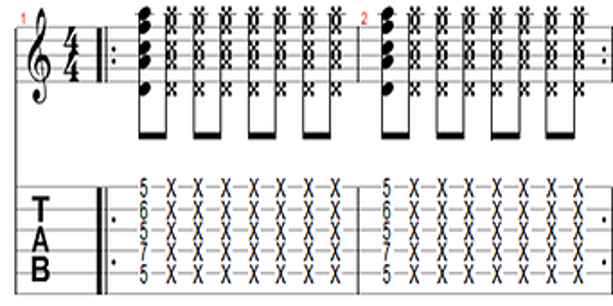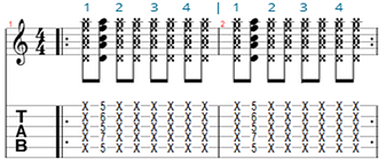Okay, now is the time to give you some interesting exercises for you to develop rhythmic independence.
Starting from our logic of counting (1, 2, 3, 4) to find the time signature of a song, rhythmic independence is knowing how to choose to play in beat 1, beat 2, beat 3, etc.
This independence gives us the freedom to work at any point in rhythmic marking, without depending only on strong beats, for example. The exercises that we will see below has this purpose.
In these exercises, when applied to the guitar, the picking hand will mark the tempo by playing eighth notes, while the left hand will muffle the strings, except when indicated to play the chord. That is, you should let the chord sound only when indicated, muffling the strings with your left hand the rest of the time.
If you are training on another instrument, understand “muffling the notes” as a rest, letting the chord sound only when indicated.
We recommend that you write these exercises in software such as Guitar Pro or Noteflight (free) to play along with the program.
The chord used here in these exercises will be the Dm7 chord, but you can use any other you prefer, or even a single note.
The time used will be 4/4 and all notes will be eighth notes:

In this first exercise, you should only play the first eighth note of the measure. Note: the beats can be counted as follows:

Ex 2: In this next exercise, you should only play the second eighth note of the first beat:

Ex 3-14: Blocked content…
Read the continuation of this article and many other full articles in the Simplifying Theory PDF Booklet.
Go to: Mathematics and music
Back to: Module 12
